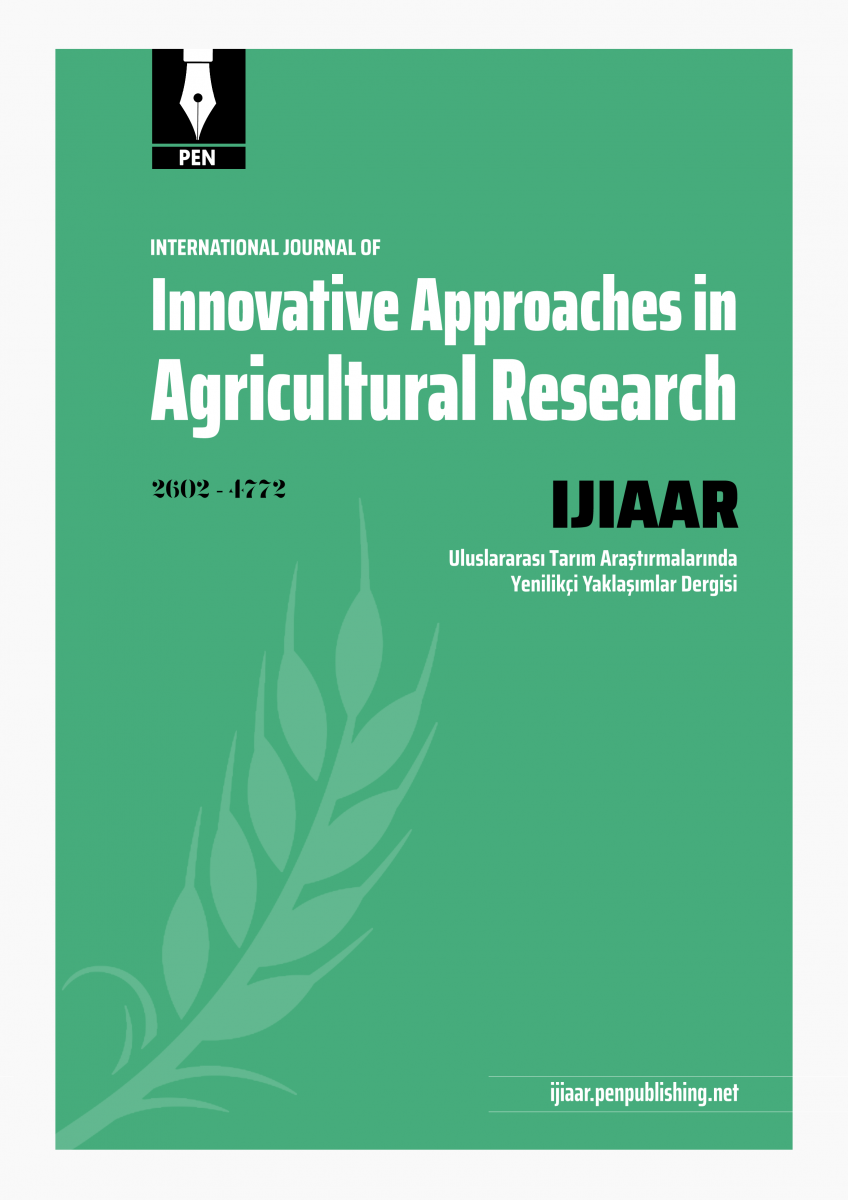Original article | Open Access
International Journal of Innovative Approaches in Agricultural Research 2019, Vol. 3(4) 591-600
After-effect of Some Herbicides and Their Mixtures with Growth Regulator and Foliar Fertilizer on the Primary Germ Weight of Cotton Seeds (Gossypium Hirsutum L.)
pp. 591 - 600 | DOI: https://doi.org/10.29329/ijiaar.2019.217.5
Published online: December 10, 2019 | Number of Views: 60 | Number of Download: 619
Abstract
The trial was carried out during 2013-2015, with two cotton cultivars – Helius and Darmi (Gossypium hirsutum L.). Herbicides Goal 2 Е (oxifluorfen), Linuron45 SC (linuron), Wing P (pendimethalin + dimethenamid), Merlin 750 WG (izoxaflutole), Bazagran 480 SL (bentazone) were studied. These herbicides were used alone or in combinations with the growth regulator Amalgerol premium or with the foliar fertilizer Lactofol O during the budding stage of cotton. From the viewpoint of cotton growing technology, technologically the most valuable are combinations of all herbicides with Lactofol O, which are followed by Wing-P + Amalgerol, Bazagran 480 SL + Amalgerol and sole use of herbicide Wing-P on cultivar Helius. Technologically the most valuable are herbicides Goal 2 E and Wing-P and tank mixtures Goal 2 E + Amalgerol, Wing-P + Amalgerol, Merlin 750 WG + Amalgerol, Bazagran 480 SL + Amalgerol, Wing-P + Lactofol O, Merlin 750 WG + Lactofol O and Bazagran 480 SL + Lactofol O on cultivar Darmi. These variants combine biggest primary germ weight and high stability of this index during the different years. The alone use of the herbicides Linuron 45 SC and Merlin 750 WG has low assessment and should be avoided.
Keywords: Cotton, Herbicides, Foliar fertilizer, Growth regulator, Primary germ weight
| How to Cite this Article |
|---|
|
APA 6th edition Harvard Chicago 16th edition |
| References |
|---|
|

